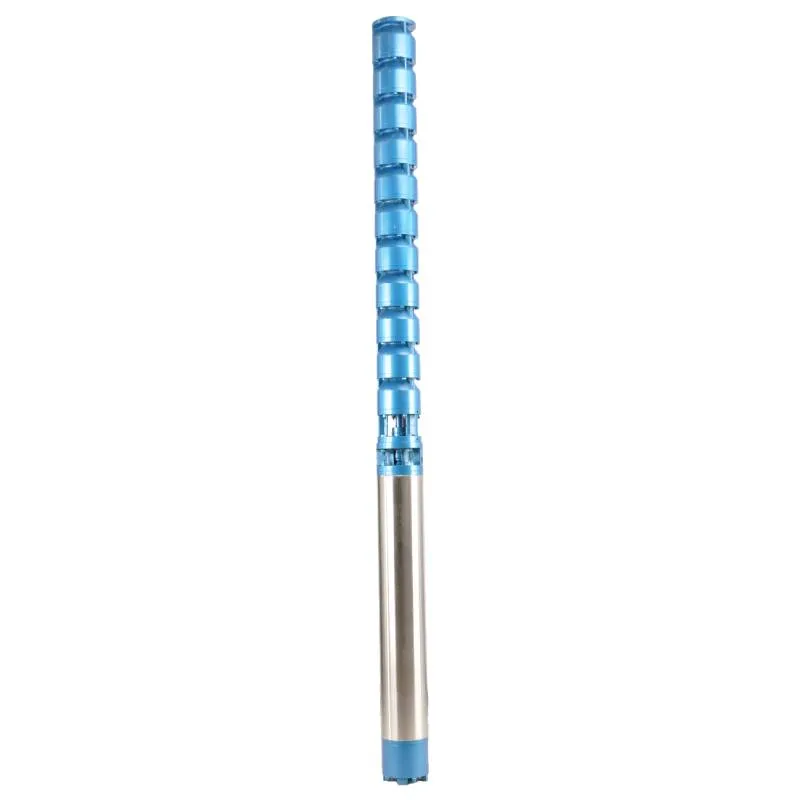dec. . 19, 2024 16:16 Back to list
solar powered submersible well pump
A Comprehensive Overview of Solar-Powered Submersible Well Pumps
In recent years, the demand for sustainable and renewable energy solutions has soared, leading to significant innovations in various sectors, including water management. One of the most notable advancements is the solar-powered submersible well pump, which combines the efficiency of submersible pump technology with the sustainability of solar energy. This article explores the functionality, benefits, applications, and future prospects of solar-powered submersible well pumps.
Understanding Submersible Well Pumps
Submersible well pumps are designed to be submerged underwater, often in deep wells, to extract water. Unlike traditional surface pumps that draw water from above, submersible pumps are placed directly into the water source, which allows for greater efficiency and reduced noise. They operate using an electric motor that drives a series of impellers, pushing water to the surface. This design is particularly beneficial for wells that may be several hundred feet deep.
The Role of Solar Energy
Solar-powered submersible well pumps rely on solar panels to generate electricity, which fuels the motor of the pump. This system typically includes photovoltaic panels, a controller, a battery (in some setups), and the submersible pump itself. During daylight hours, the solar panels convert sunlight into electricity, which powers the pump. In scenarios where water needs to be pumped during non-daylight hours, batteries can store excess energy generated during the day, ensuring a continuous water supply.
Advantages of Solar-Powered Submersible Well Pumps
1. Sustainability The most significant advantage of solar-powered pumps is their contribution to sustainable water management. By utilizing renewable solar energy, these systems reduce reliance on fossil fuels and lower carbon footprints, making them an environmentally friendly option.
2. Cost-Effectiveness While the initial installation costs may be higher than traditional pumps, the long-term savings are considerable. Solar-powered systems significantly reduce electricity bills, and with minimal maintenance, they can provide years of reliable service.
3. Versatility Solar-powered submersible well pumps can be used in various applications, including agriculture, residential water supply, irrigation systems, and even remote locations where grid electricity is unavailable. Their adaptability makes them suitable for both urban and rural settings.
solar powered submersible well pump

4. Low Maintenance With fewer moving parts compared to traditional pumps, solar-powered systems generally require less maintenance. The absence of complicated electrical components reduces the likelihood of malfunctions, resulting in more reliable operation.
5. Energy Independence By harnessing solar power, users gain energy independence, especially in areas with unreliable electricity. This is particularly beneficial in remote or underserved regions, where access to conventional power sources is limited.
Applications
Solar-powered submersible well pumps are increasingly popular in various fields. In agriculture, they are used for irrigation, allowing farmers to maintain crops even in arid conditions. Rural communities benefit from these pumps for drinking water, enhancing water availability, and improving quality of life. Additionally, they are also employed in industries such as livestock farming, where reliable water supply is critical.
Challenges and Considerations
Despite the numerous benefits, there are certain challenges associated with solar-powered submersible well pumps. The effectiveness of solar panels is contingent upon sunlight availability, which can vary by season and geography. Therefore, careful assessment of local solar conditions is essential during system design and installation. Moreover, upfront costs may deter some users, although financial incentives and long-term savings can offset initial investments.
The Future of Solar-Powered Submersible Well Pumps
The future of solar-powered submersible well pumps appears promising. As technology advances, solar panels are becoming more efficient and affordable, making these systems increasingly accessible. Additionally, ongoing innovations in battery storage technology will further enhance the reliability of these systems by allowing for consistent water supply regardless of solar conditions.
In conclusion, solar-powered submersible well pumps represent a sustainable solution for water management, combining advanced pumping technology with the benefits of renewable energy. With their versatility and long-term cost savings, they are set to play a crucial role in meeting global water demands, particularly in underserved areas. As the world continues to shift towards more sustainable practices, these innovative systems are poised to lead the way in effective and environmentally responsible water extraction.
-
Submersible Water Pump: The Efficient 'Power Pioneer' of the Underwater World
NewsJul.01,2025
-
Submersible Pond Pump: The Hidden Guardian of Water Landscape Ecology
NewsJul.01,2025
-
Stainless Well Pump: A Reliable and Durable Pumping Main Force
NewsJul.01,2025
-
Stainless Steel Submersible Pump: An Efficient and Versatile Tool for Underwater Operations
NewsJul.01,2025
-
Deep Well Submersible Pump: An Efficient 'Sucker' of Groundwater Sources
NewsJul.01,2025
-
Deep Water Well Pump: An Efficient 'Sucker' of Groundwater Sources
NewsJul.01,2025
-
 Submersible Water Pump: The Efficient 'Power Pioneer' of the Underwater WorldIn the field of hydraulic equipment, the Submersible Water Pump has become the core equipment for underwater operations and water resource transportation due to its unique design and excellent performance.Detail
Submersible Water Pump: The Efficient 'Power Pioneer' of the Underwater WorldIn the field of hydraulic equipment, the Submersible Water Pump has become the core equipment for underwater operations and water resource transportation due to its unique design and excellent performance.Detail -
 Submersible Pond Pump: The Hidden Guardian of Water Landscape EcologyIn courtyard landscapes, ecological ponds, and even small-scale water conservancy projects, there is a silent yet indispensable equipment - the Submersible Pond Pump.Detail
Submersible Pond Pump: The Hidden Guardian of Water Landscape EcologyIn courtyard landscapes, ecological ponds, and even small-scale water conservancy projects, there is a silent yet indispensable equipment - the Submersible Pond Pump.Detail -
 Stainless Well Pump: A Reliable and Durable Pumping Main ForceIn the field of water resource transportation, Stainless Well Pump has become the core equipment for various pumping scenarios with its excellent performance and reliable quality.Detail
Stainless Well Pump: A Reliable and Durable Pumping Main ForceIn the field of water resource transportation, Stainless Well Pump has become the core equipment for various pumping scenarios with its excellent performance and reliable quality.Detail
